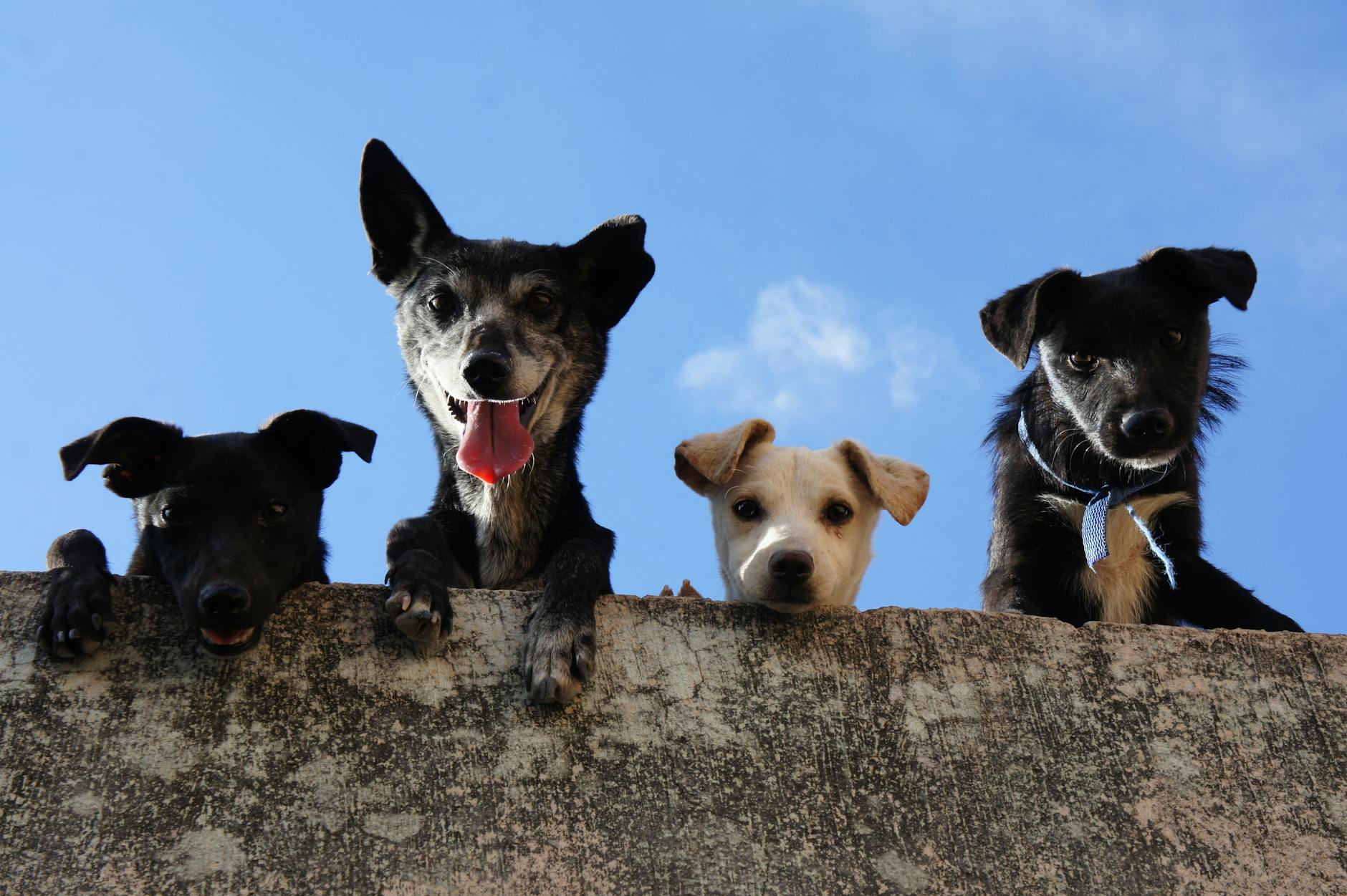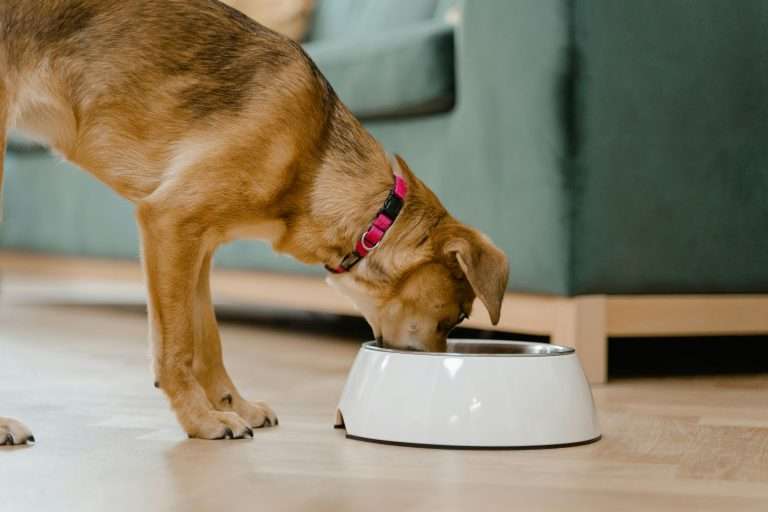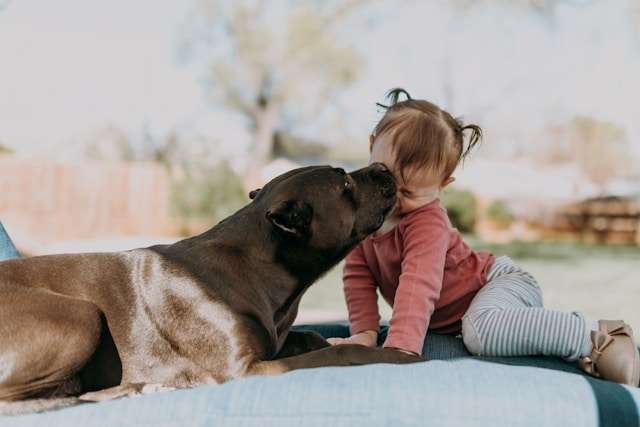Understanding the Role of Calories in Your Dog’s Diet for Better Health

Understanding the Role of Calories in Your Dog’s Diet for Better Health. Calories play a critical role in your dog’s overall health. They fuel daily activities, support growth, and maintain essential bodily functions. But, giving too much or too little can lead to weight issues and other health concerns.
Knowing your dog’s calorie needs is key to meeting their nutritional demands and preventing problems. For example, understanding how to balance calories for active dogs can make all the difference in their energy levels and fitness. If you’re exploring tailored feeding tips, check out how to create a dog feeding schedule to support your dog’s unique needs better.
Table of Contents
What Are Calories and Why Do They Matter?
Calories are the units of energy that fuel every function in your dog’s body. From chasing toys around the yard to maintaining rest, your furry friend uses calories constantly. Essentially, they’re the “gasoline” for your dog’s engine, ensuring they have the energy needed for a happy and active life. But why do they matter so much? Feeding too few calories can lead to lethargy and weight loss, while overfeeding results in excess weight, stress on joints, and other health problems.
Understanding Energy Needs
Every dog is unique, and so are their energy requirements. Caloric needs depend on several factors, such as:
- Age: Puppies burn calories quickly for growth and play, while senior dogs often require less energy.
- Breed and Size: Larger breeds, like Labradors, often need more calories per day than smaller ones like Chihuahuas.
- Activity Level: Is your pooch an athlete or a couch potato? Active dogs demand more energy.
- Life Stage: Pregnant or nursing dogs have heightened caloric needs.
For example, breeds like Border Collies, with high activity demands, require energy-packed meals to keep up with their fast-paced lifestyle. If this sounds familiar, learn more about choosing calorie-dense food for active breeds.
Caloric Density in Dog Food
Food isn’t just about flavor; it’s about packing the right amount of energy. Caloric density refers to how much energy is in a set volume of food, typically measured in kilocalories (kcal). Here’s what you should know:
- Higher Caloric Density: Foods with more calories per cup. Often found in formulas for sporting or working dogs.
- Lower Caloric Density: Best for weight management in less active or senior dogs.
Factors like fat content, protein level, and type of food (wet or dry) play a massive role in caloric density. Understanding this makes it easier to tailor meals to your dog’s needs. Are you curious about deciphering this on pet food labels? Check out this guide for clarity.
Photo Example

Photo by Jola Kedra
You’re essentially handing your dog the keys to better health and happiness by providing the correct calories. Consult reliable feeding guidelines or a trusted veterinarian for advice when in doubt!
How to Calculate Your Dog’s Caloric Needs
Ensuring your dog gets the correct calories each day is essential for maintaining their health and energy levels. But how do you figure out the exact amount they need? It turns out it’s not as complicated as it seems. Let’s break it down.
Factors Influencing Caloric Intake
Every dog is different like humans, and their caloric needs depend on several key factors. Here’s what you’ll want to consider:
Age: Puppies typically require more calories than adult or senior dogs due to their rapid growth and boundless energy.
Weight: A dog’s total body weight plays a huge role. Larger dogs generally need more calories than smaller breeds, though this depends on their activity level.
Health Status: Dogs dealing with illnesses, recovery after surgery, or chronic conditions like hypothyroidism may have adjusted caloric requirements.
- Activity Levels: A sporting or herding breed constantly moving will burn more calories than a more relaxed companion breed. High-energy breeds like Border Collies thrive on calorie-dense diets to keep up with
demanding routines. If you’re curious about feeding options for active pups, consider exploring the best food for herding breeds.
Keep in mind that seasonal changes can also impact calorie needs. For example, some breeds require more calories during colder months to stay warm and active. If this applies to your dog, check out our guide on how seasonal changes affect diets.
Using the Harris-Benedict Equation
At the heart of determining your dog’s caloric needs is the Resting Energy Requirement (RER), which estimates how much energy their body needs at rest. This is where the Harris-Benedict equation comes into play. Here’s how you can calculate RER:
- Take your dog’s weight in kilograms (1 pound = 0.45 kilograms).
- Multiply their weight by the power of 0.75, then multiply this by 70:
RER = 70 × (weight in kg^0.75)
For example, if your dog weighs 10 kg (about 22 pounds):
RER = 70 × (10^0.75) ≈ 400 calories/day
Does your dog’s activity level or life stage vary? Multiply the RER by specific factors (known as DER multipliers) to better reflect their daily lifestyle:
- Sedentary dogs: RER × 1.2
- Moderately active dogs: RER × 1.5
- Highly active or working dogs: RER × 2.0-3.5
You can also save time by using tools like this calorie calculator from PetMD to plug in details and get an accurate figure.
Understanding these calculations ensures you feed your dog based on their actual needs instead of guesswork.

Photo by Przemysław Cyruliński
By applying these steps, you’re setting up your dog for a healthier, happier life! Whether they’re lounging on the couch or working hard at agility training, matching their caloric intake to their needs is critical.
Choosing the Right Food for Your Dog
Picking the right food for your dog isn’t just about flavor; it’s about meeting their unique caloric and nutritional needs. A simple shift in caloric content can make a huge difference in energy levels, weight management, and overall health.
Understanding Dog Food Labels
Dog food labels can feel like a foreign language. Knowing how to decode them unlocks critical caloric insights. Start by focusing on these key areas:
- Calorie Content: Look for the “Calorie Content” section. This value is expressed as kilocalories (kcal) per kilogram or cup. It helps you measure exactly how much energy is in each serving.
- Guaranteed Analysis: This section breaks down protein, fat, fiber, and moisture percentages. Higher fat usually means higher calories, so keep an eye on this for calorie-dense diets.
- Ingredient List: Ingredients are listed in descending order by weight. Whole meats like chicken or salmon rank higher for quality. Avoid vague ingredients like “meat by-products.”
- Life Stage Suitability: Labels will indicate whether the food is designed for puppies, adults, or seniors. Each stage has different caloric demands.
For a deeper dive into label interpretations, check out Deciphering Dog Food Labels. You can also refer to tips on what ingredients to avoid in dog food for clarity.

Photo by Jessica Lewis ???? thepaintedsquare
Types of Dog Food Based on Caloric Needs
Not all dog food is created equal, especially regarding calorie content. Dogs with different activity levels or health needs may benefit from specific types of food:
- Dry Food (Kibble): Convenient, long-lasting, and calorie-dense. Best for most adult dogs, but portion control is essential to avoid overfeeding.
- Wet Food (Canned): Higher moisture, lower caloric density per serving. It is ideal for picky eaters or dogs who need to stay hydrated.
- Homemade Food: You can tailor recipes to your dog’s caloric needs. However, careful planning is required to ensure balanced nutrients.
- Raw Diets: These are high in protein and fat, and they can be calorie-packed but need proper handling and vet advice.
Each type offers unique benefits, so your choice should align with your dog’s lifestyle and calorie requirements. Curious about which might suit your dog best? For tailored recommendations, check out options like best dry dog food or how many calories are in dog food.
Choosing the right food type simplifies calorie management and ensures your dog gets the nutrition they need. Whether buying kibble or whipping homemade meals, it’s all about balance and suitability.
Weight Management and Caloric Intake
Understanding how calories impact your dog’s weight is central to keeping them healthy. Overfeeding or underfeeding can lead to serious health issues, so monitoring their caloric intake and adjusting based on their unique needs is crucial. Let’s explore some practical insights.
Recognizing Underweight and Overweight Dogs
Dogs come in all shapes and sizes, but maintaining an optimal weight is key for their well-being. How can you tell if your dog is underweight or overweight? Here are some clear signs to look for:
- Underweight Dogs:
- Ribs, spine, and pelvic bones are visibly prominent or easily felt under thin skin.
- Reduced muscle mass.
- Lack of energy, dull coat, and poor overall appearance.
- Overweight Dogs:
- Difficulty feeling ribs with light pressure.
- Visible fat deposits around the base of the tail or on the lower back.
- Lethargy, limited movement, or excessive panting after mild activity.
Regular vet check-ups can provide more insight into your dog’s body condition. A simple Body Condition Score (BCS) chart can help you visually evaluate their weight. For additional details on keeping senior dogs at a healthy weight, read more about optimal nutrition for aging dogs.
Tips for Weight Loss and Maintenance
If your dog needs to shed a few pounds or maintain their current weight, managing their calorie intake is essential. Here’s how to approach it effectively:
- Portion Control: Use a kitchen scale or measuring cup to divide daily food portions accurately.
- Switch to Low-Calorie Treats: Consider healthy options like carrots or green beans instead of high-calorie snacks. Learn more about incorporating veggies from obesity and weight management tips.
- Choose the Right Food: Opt for calorie-conscious kibble or wet food with high nutritional value but reduced fat, like those suggested in food for managing breeds prone to weight issues.
- Stay Active: Increase walks, add playtime, or try dog-friendly exercises to boost calorie burn.
- Scheduled Feeding: Avoid free feeding. Stick to regular meal times to control calorie intake.
- Consult Your Vet: Work closely with your vet to create a customized feeding plan. For example, specific formulas can aid in weight control while keeping your dog satisfied.

Photo by Edgar Daniel Hernández Cervantes
Healthy weight management isn’t about drastic changes but consistent efforts over time. Need advice on diet adjustments? Check out creating a weight loss plan for dogs for detailed strategies. Minor tweaks, like lower-calorie meals or extra walk time, can make noticeable improvements.
Common Misconceptions About Dog Calories
Misunderstanding your dog’s caloric needs can lead to significant health problems, from obesity to malnutrition. Let’s set the record straight on some widespread myths about dog calories and their diets.
Myth: All Dogs Need the Same Caloric Intake
This is like saying every human can thrive on the same amount of food—wildly unrealistic! Every dog is unique, and their caloric needs vary depending on several factors, including their breed, size, activity level, and overall health.
- Breed Matters: A highly active breed like a Border Collie will demand significantly more calories compared to a lap-loving Pug. For example, active Border Collies often require between 1,000–1,400 calories per day, which you can learn more about in this detailed guide.
- Life Stage Counts: Puppies need extra energy for growth, while senior dogs typically burn fewer calories.
- Activity Level Rules: A working dog can quickly require double the caloric intake of a dog that lounges around most of the day.
Tailoring your dog’s diet to their needs ensures they maintain a healthy weight and energy level. Always consider their lifestyle and consult your vet if you’re unsure about their requirements.
Myth: Feeding Dogs Extra Calories is Always Good
You love your furry friend, so giving them extra food might seem harmless—or even kind. However, overfeeding is one of the leading causes of obesity in dogs, and it can lead to severe health issues.
- Overfeeding Risks: Extra calories don’t just add weight; they strain your dog’s joints, reduce mobility, and increase the risk of diseases like diabetes and heart problems. Instead of adding more food, feed the right amount to match their needs.
- Moderation is Key: Even if your dog begs for treats or looks “hungry,” it doesn’t mean they need more food. You can manage portion sizes or switch to healthier options like low-calorie treats. Check out this guide to maintaining a balanced diet for active dogs for more tips.
- Overeating Signals: If your dog is gaining weight or becoming less energetic, reassess their caloric intake immediately. Tools like calorie calculators can help pinpoint their ideal consumption.
To avoid these pitfalls, remember that food is not love. Keep treats, snacks, and meals proportional to your dog’s activity level and life stage. For actionable tips on recognizing these signs and making adjustments, explore more about debunking dog nutrition myths.
Feeding isn’t about quantity; it’s about quality and balance. Learning your dog’s unique nutritional needs ensures they stay healthy and thrive for years to come.
The Importance of Monitoring Caloric Intake
Keeping track of your dog’s caloric intake is more than a numbers game—it’s a cornerstone of their health. Calories fuel all aspects of your dog’s life, from playful afternoons at the park to maintaining muscle and organ function. Without proper monitoring, your dog could face weight-related issues, nutritional imbalances, or chronic illnesses. Here’s why this matters and how to stay on top of it.
Why Monitoring Matters
Calories determine more than just your dog’s weight. They directly influence energy, mood, and long-term health outcomes. Overfeeding can lead to obesity, joint pain, and heart issues, while underfeeding may cause malnutrition, loss of energy, and weakened immunity.
- Like working breeds, high-energy dogs require precise caloric adjustments for optimal performance.
- Senior dogs might need reduced caloric intake to prevent unnecessary weight gain.
For more detailed insights into managing calorie needs for specific breeds, check out top dog food options for Blue Heelers.
Tools for Accurate Calorie Tracking
Gone are the days of guessing portion sizes. Today, you’ve got several tools at your fingertips to take the mystery out of meal planning:
- Calorie Calculators: Apps or online calculators (like this one from PetMD) let you input breed, weight, age, and activity levels to find the ideal caloric number.
- Measuring Cups or Scales: Always measure food accurately based on what your dog should eat, not what you think they need.
- Food Diaries: Track what and how much your dog eats daily to identify patterns.
Regular monitoring can even help prevent obesity and related health challenges, as highlighted in nutritional management of canine weight.
Adjusting as Your Dog’s Needs Change
A dog’s caloric needs aren’t static—they fluctuate with age, lifestyle, and health conditions. Here are key milestones when changes may be necessary:
- Puppyhood: Puppies grow rapidly and require more calories—like feeding the engine of a race car.
- Adulthood: Balance energy levels with daily activity to avoid overfeeding.
- Senior Years: Older dogs often need fewer calories but require highly nutritious meals to maintain muscle mass.
Explore guidelines for aging Akitas and portion control for specific advice about senior dietary adaptation.

Photo by Roman Biernacki
Tips for Effective Monitoring
Here are some actionable steps to make caloric monitoring simple and sustainable:
- Stick to Feeding Schedules: Consistency is key. Divide daily caloric needs into 2-3 meals for better digestion and energy distribution.
- Watch for Signs: Keep an eye on your dog’s body condition and energy levels for signs of overfeeding or malnutrition.
- Avoid Free-Feeding: Measure meals to remove the guesswork and prevent overeating.
- Consult Your Vet: Regular checkups ensure your dog’s diet aligns with their health goals.
Even small adjustments to caloric intake can make a big difference. For example, aligning your feeding practices with strategies from this veterinary article can help achieve healthier outcomes.
Frequently Asked Questions About Calories in Your Dog’s Diet
Understanding your dog’s caloric needs can feel overwhelming, but you’re not alone. Below, we’ll address some of dog owners’ most common questions about calories, diet, and maintaining a healthy balance. Whether you’re a seasoned pet parent or new to dog ownership, these answers will help clear up doubts and set you on the right path.
Is All Dog Food Caloric Content the Same?
No, not all dog food has the same caloric content. Different brands and types of food (wet, dry, homemade) contain varying calories. For instance:
- High-Calorie Foods: Often designed for active, working, or underweight dogs. Effective in meeting energy demands.
- Low-Calorie Foods: Tailored for less active, senior, or overweight dogs to help with weight control.
Always check the calorie content listed on the label of your dog’s food. If unsure, this handy guide can help you evaluate food options.
How Can I Tell If My Dog Is Eating Too Many Calories?
Overfeeding can lead to obesity and other health issues. Signs to watch for include:
- Difficulty feeling ribs under the fur.
- Noticeable fat around the chest or base of the tail.
- Lethargy or panting during light activity.
Remember, calorie needs aren’t just body-size dependent but also tied to activity levels and breed type. Check out our dog breed guide to better understand energy needs specific to breeds.

Photo by MART PRODUCTION
What Role Does a Dog’s Age Play in Calorie Needs?
Age heavily influences your dog’s caloric needs:
- Puppies: Require more calories for growth and development.
- Adults: Balanced diets to sustain energy for regular activities.
- Seniors Often need fewer calories to avoid weight gain but require nutrient-dense meals.
Dogs at different life stages benefit from tailored diets. Learn more about nutritious options for aging dogs.
What Happens If a Dog Doesn’t Get Enough Calories?
Undernourishment in dogs can lead to:
- Ribs and bones are becoming increasingly prominent.
- Reduced energy, making them less playful.
- Declining immunity, resulting in frequent illnesses.
Consulting a veterinarian is crucial if you’re concerned about your dog not eating enough. Read about general feeding guidelines for further insight.
How Many Treats Should Dogs Have Without Overdoing Calories?
Treats should comprise no more than 10% of your dog’s daily caloric intake. Overfeeding treats can lead to hidden calorie overloads. Healthy options like vegetables (think baby carrots or cucumbers) can substitute for conventional high-calorie snacks. For more precise feeding tips, check out nutrition myths and FAQs.
Think of calories as your dog’s fuel. Striking the right balance ensures they’re running optimally—happy, healthy, and full of life. Remember these tips as you plan your meals to set your furry friend up for success!
Conclusion
Understanding your dog’s caloric needs is one of the simplest ways to boost their health and well-being. Getting the balance right means matching their energy intake with their unique lifestyle, age, and activity level.
Start by committing to regular calorie monitoring and applying practical feeding schedules. For tips on structured mealtime routines, explore feeding large breed dogs: nutrition tips.
Personalized meal planning can make a big difference if your dog has special dietary needs. Consider learning more about The Farmer’s Dog food and tailored meal plans.
Minor, thoughtful adjustments to their diet today can lead to a longer, healthier life they’ll thank you for.






